Once you start skipping empty time it becomes necessary to frame the scene you’re skipping to: The continuous and relatively steady flow of events experienced in a classic dungeoncrawl is replaced with something inconsistent, noncontiguous, and possibly even non-sequential.
In HeroQuest, Robin D. Laws defines three different types of “time” in a roleplaying game – abstract time, now time, and slow time. These can be useful ways to think about the pacing of your session and to them I’ll also add the concept of a sharp cut.
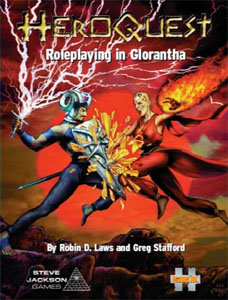 SLOW TIME: According to Laws, this is where critical events and extended contests happen. It’s the place where people want to fine-tune their intentions and their actions, and as a result it’s a place where either more rules or more attention (or both) gets applied. The narration of events in slow time generally takes more time to resolve in real time than it does for the characters to experience it. (The D&D combat system is an example of slow time.)
SLOW TIME: According to Laws, this is where critical events and extended contests happen. It’s the place where people want to fine-tune their intentions and their actions, and as a result it’s a place where either more rules or more attention (or both) gets applied. The narration of events in slow time generally takes more time to resolve in real time than it does for the characters to experience it. (The D&D combat system is an example of slow time.)
NOW TIME: We could also refer to this as being “in the scene”. This is typically where the majority of our playing time is spent: The players are making every decision for their characters and there isn’t any empty time being skipped over.
ABSTRACT TIME: Abstract time is a soft method of moving over empty time. It generally takes the form of what I think of as “eliding narration”: “Several days pass as you cross the Great Plain…” or “You leave the Docks and head across town…” (This is the method I most often use for moving between scenes, largely because it never fully disengages from the players: With practice it becomes easy to read a table’s reaction to eliding narration and “know” when you need to drop out of it and back into a scene. I also find it very conducive for the sort of non-linear scenario structures I use, because it allows the players to continue providing input even as we move rapidly through the game world’s clock.)
SHARP CUT: Finally we have the sharp cut. Here we jump directly from the end of one action to the beginning of a different action without explaining the transition or relationship between them. For example:
Player: Okay. I head to bed.
GM: You fall asleep as soon as your head hits the pillow. And we cut to – the sharp pain of the goblin’s sword biting through your chain and deep into your arm.
Obviously a lot of scene transitions are going to take the form of either sharp cuts or the eliding narration of abstract time. But even if there’s a relative consistency of “now time” between sequences, you may still find it useful to conceptually break the action into scenes and use scene-framing techniques to structure them.
Whatever the case may be, however, you will need an understanding of both how to open a scene and how to close a scene.
THE AGENDA
Flipping the pages of a diary. Fast-fowarding through a video. Cutting sharply to a fresh moment. How do we decide when to stop flipping? Or push the play button? Or what to cut to? How do we decide when a new a scene begins?
There are several ways that you can think about what it means to “open” a scene, but I generally think of it in terms of rapidly establishing the moment (the who, what, where, and when) and then applying a sharp impetus which creates action.
(I say “rapidly” because if the entire idea is to skip the empty time between meaningful decisions, then you should be trying to eliminate as much of that empty time — to cut as close to the next meaningful choice — as possible. You also generally can’t go too far wrong by keeping the focus on your players; by engaging them constantly in the process of making meaningful choices.)
First, identify the agenda of the scene. Why are we here? Why is this moment important? Agendas don’t have to be portentous, but if you’re cutting into a scene there must have been a reason why you’re doing it.
(Let’s take a moment to imagine a scene without an agenda. Remember that sequence from Vampire: The Masquerade where a PC decides to drive downtown? Okay. The GM cuts away from the house and decides to open the next scene.
GM: You’re sitting at a red light on the corner of Chicago and Franklin. What are you doing?
Player: I wait for the light to turn green.
GM: The light turns green. You continue driving downtown.
End of scene. Without an agenda – without some reason for focusing on the events at Chicago and Franklin – that was clearly a pointless waste of time. Fortunately, this GM at least had the common sense to cut the scene off and move on. Sometimes you’ll see neophyte GMs continue to linger in these sorts of pointless exchanges for painfully long periods of time.)
The types of agendas that are prioritized, the methods used to select them, and the way they’re presented is another place where the motivations and techniques of an individual GM are strongly expressed. But, in general, I find it useful to think of the agenda in terms of the question which is being answered by the scene. Another way to think of this is in terms of the scene’s stakes. (Literally, what’s at stake in the scene.)
For example, if we’re dealing with a standard dungeon crawl we might think of each room as a separate scene. Let’s say that one of these rooms contains an ogre. We might say that the agenda of this scene is to answer the question, “Can the PCs kill the ogre?” (At stake are the lives of the PCs and the life of the ogre.) But you could also radically alter the character of this scene by asking a different question: “How are the PCs going to get past the ogre?” makes the scene more open-ended. “Can the ogre convince the PCs to help him fight the goblins?”, on the other hand, would change the scene entirely.
Non-dungeon examples might include things like: Will Billy take the heroin? Can Sherlock find the bloody handprint? Will Gunther betray the Jewish family living in his secret attic? And so forth.
(If you’re railroading, then you may have already predetermined the answers to these questions, but the questions are still being asked. If you’re not railroading, then it’s very likely that you’ll find the agenda of a scene changing after it’s begun. But there’ll still have been some initial or intended agenda that made you frame the scene in the first place, and that’s what we’re interested in at the moment.)
THE BANG
Now that you’ve framed the agenda, you need to actually start the scene by zooming in or refocusing or painting a verbal sketch (or whatever other procedural descriptor seems most appropriate to you).
What you’re looking for here is the bang.
The bang is the thing which forces the PCs to make one or more meaningful choices (or at least provokes them with the opportunity to do so). It’s the explosive force which launches the scene and propels it forward.
Let’s keep it simple for the moment by looking back at our dungeon scene with the ogre. Assume the PCs have failed their Stealth check. Does the scene start when the ogre jumps out and snarls in their face? Or does it start when they’re still approaching its chamber and they can hear the crunching of bones? Or when they see a goblin strung up on a rack with its intestines hanging around its ankles… and then the deep thudding of heavy footsteps fills the corridor behind them as the ogre returns for its meal?
Each of these is a different bang, and you can see how changing the bang can dramatically shift the nature of the ensuing scene (even if all the other elements of that scene remain the same). Choosing the “right” bang is usually more art than science.
Outside of the dungeon, bangs might look like this:
“Cut to Thursday afternoon. You’re cleaning your son’s room. You’re shifting around a couple of his well-read comic books when you find a syringe. A used syringe.”
“You’re only about halfway back to town when the full moon fully crests the Blue Hills. Sharp lances of pain dance down your limbs and arc across your back as fur erupts from your skin.”
“The cop hauls himself out of the patrol car. He’s wearing a food-stained sheriff’s uniform. He’s got a ring on a chain around his neck. You recognize your wife’s wedding band.”
You’ll often find that bangs require contextualization. (In other words, you might need to start a scene a little before the bang in order to properly set up the information necessary to understand the bang.) You may also find it useful to multiply or escalate the stakes of a scene by using a sequence of multiple bangs.
For example, consider the scene featuring the “wedding band” bang above. You might open that scene by saying something like:
“You’ve been on the road to San Antonio for the better part of four hours. Heat is glimmering off the endless stretch of tar in front of you and the air conditioner is straining to keep up with it. Your gas gauge has dipped below a quarter tank now and you’re keeping a sharp outlook for any sort of service station to top it back up.”
(This is all context. Or exposition. It’s establishing some key facts about the scene that’s about to happen: The character is in the middle of nowhere. They’re low on gas. Et cetera.)
“You’re pulling past the long-faded billboard for a bait shop when the red-and-whites of some country cop blossom like a cherry tree behind you.”
(This is the first bang of the scene: Bam! There’s a cop. Do you pull over? Or do you try to outrun him? If the PC has nothing to hide from the cops this is probably a pretty weak bang. But if there’s a body hidden in the trunk, for example, then it’s got some potential.)
In this case we’ll assume that the PC decides to pull over. And that’s when we deliver the second bang (featuring the wedding band) which escalates the scene.
In conclusion, it’s time for a personal value judgment on my part: Generally speaking, the shorter the contextualization and the larger the number of interesting choices that can be made in response to a bang the better the bang is.
You don’t always need rich, complicated scenes, of course. Sometimes you want the short, brutal simplicity of someone swinging an axe at James Bond’s head. (That sort of change-up with a clear-cut choice can be vitally refreshing in a campaign mired with complex dilemmas.) But nine times out of ten, you’ll make your campaign richer and more rewarding if you make your bangs more evocative.
Go to Part 3: Filling the Frame
(A final note: The term “bang” was coined by Ron Edwards with a very narrow definition that applied it only to Edwards’ preferred style of “narrativism”. I’m very deliberately genericizing the term so that it applies to any style.)

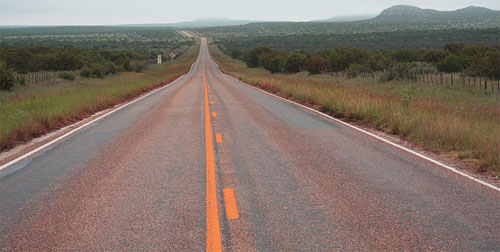
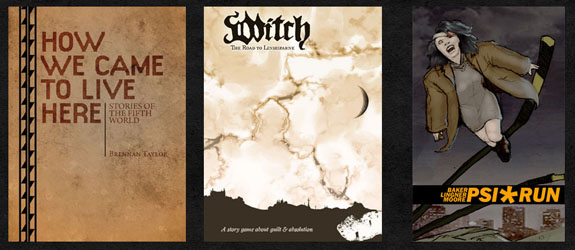
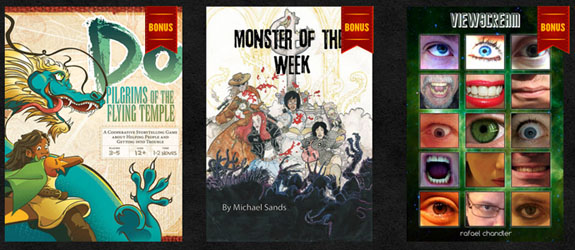

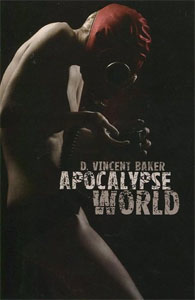
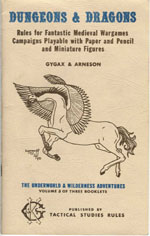 I find it most convenient to think of the treatment of empty time as a continuum. At one end of this continuum, for example, you have gameplay like that found in a pure, old school dungeoncrawl: Essentially no time is skipped and every action is catalogued because the density of meaningful decisions is incredibly high. (In by-the-book OD&D, for example, a wandering monster check is made every single turn. Because of this, even if you ignore the high density of geographically-significant navigation decisions being made, the decision to take or not take a single action
I find it most convenient to think of the treatment of empty time as a continuum. At one end of this continuum, for example, you have gameplay like that found in a pure, old school dungeoncrawl: Essentially no time is skipped and every action is catalogued because the density of meaningful decisions is incredibly high. (In by-the-book OD&D, for example, a wandering monster check is made every single turn. Because of this, even if you ignore the high density of geographically-significant navigation decisions being made, the decision to take or not take a single action 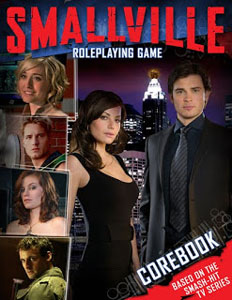
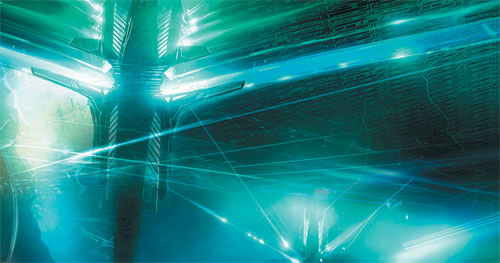
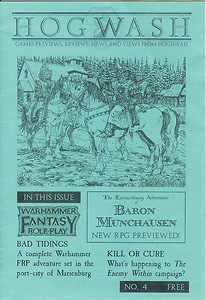 I got subscribed to Hogwash one day while I was perusing
I got subscribed to Hogwash one day while I was perusing 









